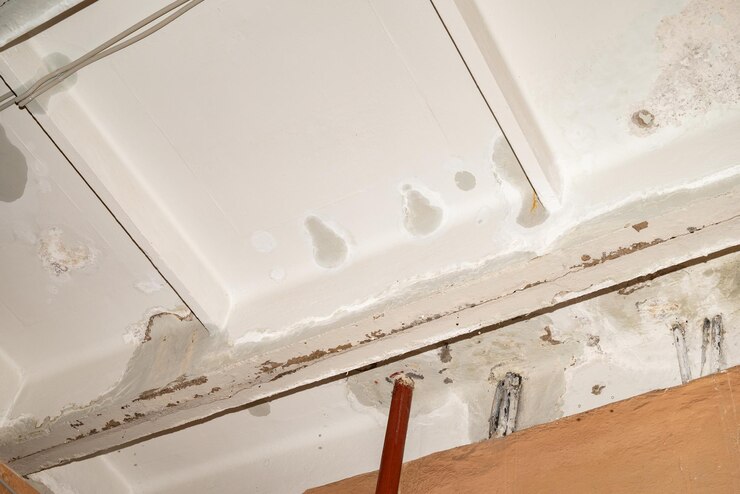
Roof leaks are the worst nightmare for any homeowner as they go undetected for a long time. In addition to the repair becoming expensive for your home, the cost of roof leakage repair can mushroom quickly if you are not proactive. Regular roof maintenance can, however, help prevent leaks and save hard-earned money in the end. Now, with a few easy yet effective tips, you can keep your roof in the finest and most pristine condition possible to avoid expensive repairs for the roof. Below are guides for basic roof maintenance and a few practical tips for the replacement of roof tiles on how to prevent leaking.
Why Maintain Your Roof?
The roof forms one of the essential parts of your house. It serves to protect you from the elements, and your belongings are kept safe from damage. However, this is usually overlooked until problems such as roof leaks arise. Small leaks can sometimes turn into big problems if left untreated at the right time. It is, therefore, very important to have regular maintenance.
It helps avoid the costly repair of roof leakage and extends the lifespan of your roof. Regular checks will allow you to spot small issues before they grow into much more expensive problems. Furthermore, an elegantly maintained roof adds to your home’s curb appeal and value
Key Tips to Prevent Roof Leaks
- Inspect Your Roof Regularly
Routine inspections are the first line of defence against roof leaks. Start by checking your roof at least twice a year: end, spring, and after every major storm. Check for shingle deterioration, with cracked, broken, or missing pieces. Keep your roof debris-free; leaves and branches hold moisture, promoting mould growth. Removal and cleaning of debris on your roof can effectively prevent water infiltration.
In case you are not at ease opening the roof and checking for damages, consider hiring a professional who can do that for you once a year. They may find things that you would miss and thus recommend needed repairs, including replacing some of the tiles that form your roof.
- Maintain Gutters and Downspouts
The other common cause of roof leaks is clogged gutters. Water overflows and pools on the roof when leaves, dirt, or other debris clog the gutters. The standing water may seep into your roof and eventually leak.
To prevent all these, make sure you regularly clean your gutters and downspouts, especially more so during the fall season, when leaves are falling. Gutter guards can also be installed in a way to minimises the buildup of debris, thus making maintenance easier, and reducing your chance of experiencing leaks.
- Check Flashing Around Vents and Chimneys
Flashing, in general, seals all gaps, cracks, and spaces within features like vents, chimneys, and skylights. Over time, flashing breaks apart and leaves joints between various roof features exposed to potential water entry and leakage. Always check all of these areas on your roof for broken flashing, rust, or deterioration. Immediately replace the flashing when defects are detected so as not to create damage through water entry.
- Look for Damaged Roof Tiles
Roof tiles act as a form of defence for the roof of your building against penetration by water. Roofs, after some time, crack, break, or slide to a position away from the right one. In this respect, it is very essential to look at the condition of the roof tiles from time to time. When one or several of them are broken or missing, immediate action is taken in the replacement of roof tiles.
Damp roofing tiles are the first sign of more severe damage that could lead to leakage. So long as you replace them in good time, it won’t only prevent leaks but also keep your roof looking its best. Do not wait for the damage to grow worse-replace damaged tiles whenever possible to avoid costly repairs later on.
- Trim Overhanging Branches
Just make sure that trees near your roof will not grow over your roof. You should trim those branches, especially the ones that hang over your roof. Those hanging branches might scrape on your roof and hurt the shingles or tiles used. Such branches might fall down because of storms, causing damage to your roof and even possibly resulting in leaks.
You prevent such damage from happening by clipping those trees and branches, thereby keeping your roofs well-maintained. Other than that, getting those trees further from your roof might be another means of preventing debris from piling up in your gutters, which is another great way of preventing leaks from happening on your roof.
- Make sure the insulation and ventilation are appropriate.
Attics must be fully ventilated and well-insulated to promote healthy roofs. In the absence of sufficient ventilation, warm moist air in the attic may be trapped, which tends to condense on the roof deck, leading eventually to wood rot and maybe mold growth which causes roof leaks.
Ensure that your attic is well-insulated and ventilated to avoid the above problems. Provide with attic fans if possible, but conduct checks on the levels of insulation installed in your attic regularly, ensuring that they are at or above standard.
Roof Tile Replacement: When Is It Necessary?
Roof tile replacement becomes necessary when your roof tiles are significantly damaged or have reached the end of their lifespan. If you notice large cracks, missing tiles, or water stains on your ceiling, it’s a sign that your roof is no longer performing as it should.
Even if you don’t have visible damage, old and worn-out tiles can become brittle over time, making them more susceptible to cracking. If you’re unsure about the condition of your roof tiles, it’s always a good idea to consult a professional roofer who can assess whether replacement is needed.
How to Save Money on Roof Leakage Repair
Preventing roof leaks is not only about performing maintenance but also about taking steps to save money on roof leakage repair. Here are some ways to keep repair costs low:
- Fix Small Issues Early
When you spot minor damage, take care of it immediately. Small repairs are much less expensive than dealing with a large-scale leak that may require extensive roof leakage repair. By staying on top of routine maintenance and fixing small issues, you can avoid the need for expensive repairs down the line.
- Invest in Quality Materials
When it’s time to replace roof tiles or other components, don’t skimp on quality. High-quality materials may cost more upfront, but they will last longer and provide better protection, saving you money in the long run. Opting for durable, high-performance materials can also help prevent leaks from happening in the first place.
- Hire a Reliable Professional
While DIY roof maintenance may seem tempting, it’s often best to hire a professional roofing contractor. They have the expertise to identify issues that you may miss and can perform repairs and roof tile replacement efficiently. In the long run, hiring a professional can save you time and money by preventing larger problems from developing.
Conclusion
Timely replacement of roof tiles and correction of minor issues will prevent leaks and save you from making very expensive repairs. Regular inspection of your roof, ensuring gutters are clean, and the right proportions of insulation and ventilation ensure that the roof can last a long time. Wait not until leaks happen; get ahead in protecting your home and wallet now.




